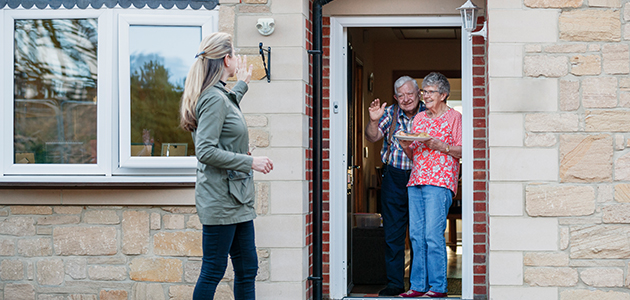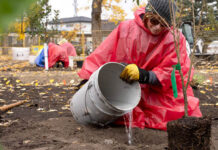With climate change making extreme weather events like floods, damaging storms, forest fires and dangerous heat waves more common all over the globe1, taking proactive steps to protect your family and your neighbors has never been more important.
The following efforts can help keep you and your communities safer in the event of an emergency:
- Check for dead trees and branches. In a violent storm, dead trees can be easily toppled, and dead branches can turn into projectiles. When the weather is good, check your property and neighboring yards for any trees that need to be pruned or cut down. Work together to dispose of them safely. If you see anything of concern, you can call a certified arborist to review and make sure it’s safe.
- Check for loose debris. Patio furniture can be easily brought in as a storm approaches, but look to see if you have anything else lying about in your yard that should be picked up and tossed out or safely stored in a shed or garage. Like dead branches, building materials, wood and other debris can turn into projectiles during a strong storm. If you see any of these items in neighboring yards, offer to help secure and dispose of them to protect both your property and theirs.
- Check on neighbors. During a storm, check on neighbors that might require additional help. The elderly and those with limited mobility or other special needs might benefit from a daily call to ensure that all their needs are being met, particularly if the power is out or roads are impassable. It’s a good idea to chat with these community members before storm season to get current phone numbers so you can contact them quickly and easily if need be.
- Form a community preparedness team. Visit Ready for a toolkit designed to show you and your neighbors how to work together with government and community-based organizations to help make your community safer, more resilient and better prepared in the case of an emergency.
- Prepare an emergency kit. Every household should have an emergency kit filled with enough supplies (food, water, medication, pet food and other necessities) to last several days in the event of a disaster that disables power and water supplies. Visit Ready for a complete list of items you should keep in your emergency kit, as well as information on where to store it and how to maintain it throughout the year. Consider working together with neighbors to ensure that everyone has a similar stash of emergency supplies in their own homes. It’s a great idea to print out this free, downloadable emergency kit checklist and distribute it to friends and neighbors.
- Learn about evacuation procedures. You may never have to evacuate your home, but it’s important to know what your city or town’s evacuation procedures are, including what shelter spaces will be available if you need them. If you know a storm is coming, make sure you have a full tank of gas and a “go-bag” filled with necessities that your family needs in case you have to get out quickly. Don’t forget to include important documents such as passports, credit cards, health cards, social insurance cards, insurance policies, photo IDs, proof of address, etc.
- Consider taking lifesaving courses. St. John Ambulance and the Red Cross (CAN, US, or UK) offer first aid and CPR courses that could be lifesaving in an emergency situation. You might even consider organizing a group first aid course for anyone in your neighborhood who might be interested in joining you.
If the unthinkable ever does happen, remember that emergency grants are available through Foresters Emergency Assistance Program to provide short term, temporary financial assistance to members affected by a disaster, large-scale emergency or significant personal hardship. This benefit is a one-time, per disaster payment.
SOURCES
1 https://www.sciencedaily.com/releases/2018/03/180321130859.htm
417961F CAN/US 10/20




